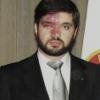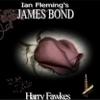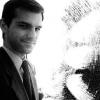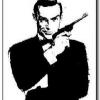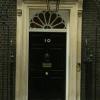There are lots of dreadful covers of John Barry's work out there that present a quite misleading view of the quality of his work. The hordes of crappy Czech orchestral compilations are serious offenders in this and many other respects; just listen to this travesty and then compare it to the original.
The mistakes in the second bar with turning Major 7th chords in plain in Major triads is so blatant, it makes one seriously question Nic Raine's hear.
That's right. Barry wrote many simple melodies but they were deceptive in that the harmonies were often deliberately discordant. That'e partly what made them so captivating.
Exactly. That's the trick. Barry's power is all about the rich harmonies and orchestration beneath, and how that further interacts with the melodic lines above. That dissonance is mostly derived from his early love for jazz - most notably Stan Kenton and Miles Davis, along with Prokofiev, Sibelius and Stravinsky. And obviously he took that Kenton sound to its absolute limit with DIAMONDS ARE FOREVER,
I mean, the Major 7th isn't a particularly discordant chord now, but it would have been in Schumann or Mozart's age. Now it's gives an air of sophistication, and celestial grandeur - which is why it works so well for Blofeld's satellite orbiting the earth. It's that kind simple harmonic complexity lacking in modern film scores. That edge.
Though the classic Barry dissonance is the minor/Major 7th chord, used famously by Bernard Herrmann in the prelude to VERTIGO and PSYCHO. You can hear in various forms throughout nearly all of Barry's scores. A good example would be
here. A m/Maj 9th stinger - 4 sforzando trombones, bass trombone and tuba sustaining it from a pp to an ff into the space of 2 bars.
It was those extended harmonies that made these scores so compelling and evocative. Another oft overlooked aspect is the indelible acoustics of the studio, where all of those scores from the early 60s to 1971 were recorded. Hence the natural reverb. CTS Bayswater, which beforehand was an old Masonic Hall. Read into that what you will...
It's very sad, seeing all of these orchestral recording studios closing down forever due to lack of revenue. Lack of interest. The latest being the very last location of CTS Studios - CTS Landsdowne, up in Watford.
On another note, I've also read the book that John Barry was educated with on his correspondence course in Cyprus - Bill Russo's Composing for the Jazz Orchestra, along with another one - Composing Music: A New Approach. Both very thorough and to-the-point, and the later in particular puts an emphasis on striving for simplicity, clarity of ideas and emotional resonance. Something that no doubt had a big influence on Barry's outlook and approach.
Less is more.
Check out this.
![[censored]](https://debrief.commanderbond.net/topic/59415-john-barry-dies/style_emoticons/default/censored.gif) me. The Casio VL-Tone orchestra featurning the stiffest drum machine you've ever heard. Not forgetting Sir Rolf on Stylophone...
me. The Casio VL-Tone orchestra featurning the stiffest drum machine you've ever heard. Not forgetting Sir Rolf on Stylophone...
Mr. Arnold's next Bond theme.I wasn't very taken with Barry's own return to synthesisers for Jagged Edge but at least the arrangements were semi-interesting. Almost Morricone-esque in fact...
It's a lesser Barry score, though still perfectly listenable. I have to say though, that's a remarkably subtle use of electronics (synth string pads).
Though unlike many of his 80s and 70s contemporariness, Barry always had the good sense to either bury the synth in the mix, or find a patch that would blend well with his superb orchestration. Whether it's the Moog from OHMSS, MIDNIGHT COWBOY, THE PERSUADERS, or THE BLACK HOLE; or my personal favourite use of synths in a Barry score - BODY HEAT, used for maximum dramatic effect (probably a combination of then newly released Jupiter 8, Oberheim OB-X, or a Prophet V). Spine chilling (or knob chilling).


